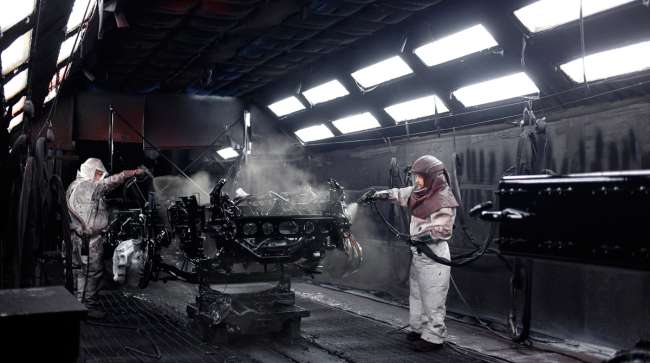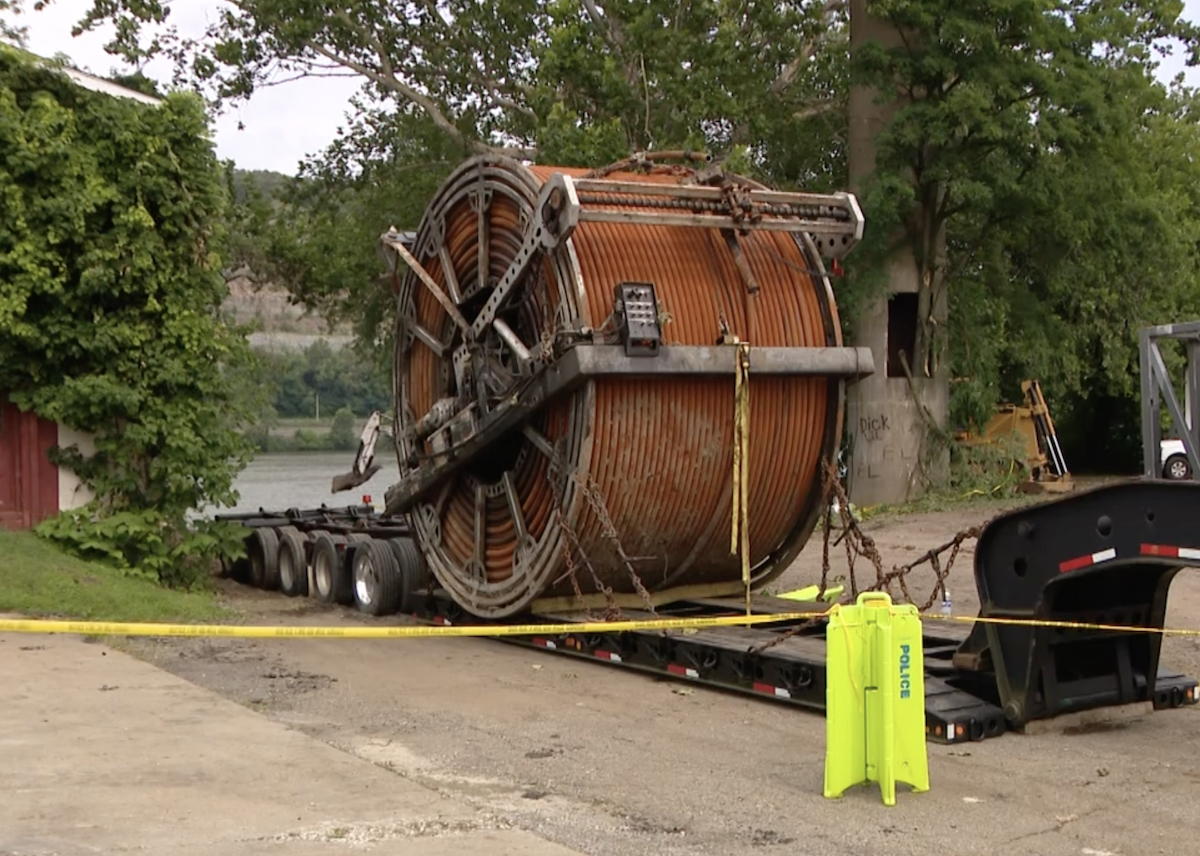Workers paint a truck chassis at the Mack Trucks facility in Macungie, Pa., in 2018. (Luke Sharrett/Bloomberg)
North American Class 8 truck orders continued to trend below the previous year but did see a surprise sequential improvement during May, according to ACT Research.
ACT preliminary data showed orders decreased 44% year over year to 13,200 units. Orders have been trending below the previous year for about a year, for the most part. But the recent data also showed that they increased 73.7% from the 7,600 units reported for April.
“Given the uncertainty around ‘Liberation Day’ in April’s data that sent order activity across the board to 59-month lows, it’s little surprise preliminary order activity for May showed [month-over-month] improvement, with total NA Classes 5-8 net orders expected at 26,400 units when released midmonth,” said Carter Vieth, research analyst at ACT Research.
Vieth noted that continued trade uncertainty will slow order activity. He also pointed out that the latest report marks the weakest seasonal period for orders. Because of that, he suspects an improvement, if one comes, likely won’t reveal itself until the opening of order boards in Q3.
“May’s preliminary Class 8 orders showed an improvement from April’s low levels but remain well below last year’s pace as the freight market continues to face challenges,” said Jonathan Randall, president of Mack Trucks North America. “The current trade environment is prompting many customers to take a cautious, wait-and-see approach to their fleet replacement decisions. Mack Trucks is prepared to support our customers as market conditions evolve.”

(FTR Transportation Intelligence)
FTR Transportation Intelligence issued a report that said Class 8 preliminary net orders for May came in at 12,000 units, which is up 40% sequentially and down 47% year over year. The report noted that orders were well below the seven-year May average of 18,319.
“Tariff volatility and uncertainty over the economy and the truck freight market continue to disrupt the North American Class 8 truck and tractor market,” said Dan Moyer, senior analyst of commercial vehicles at FTR. “Legal challenges surrounding emergency tariffs (reciprocal tariffs and those related to fentanyl) and the potential introduction of Section 232 tariffs on Classes 4-8 trucks and their components add further uncertainty to the market environment. Coupled with the anticipated revisions to the EPA 2027 NOx standards, these factors have led many fleets to postpone equipment investment decisions.”
The FTR report also speculated that the improvement from the previous month might have resulted from temporarily lowering some of the tariffs announced in early April. The report specifically pointed to the tariffs on Chinese goods going from 145% to 30%.






